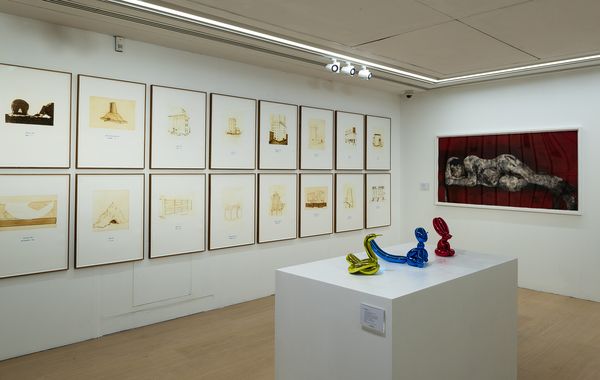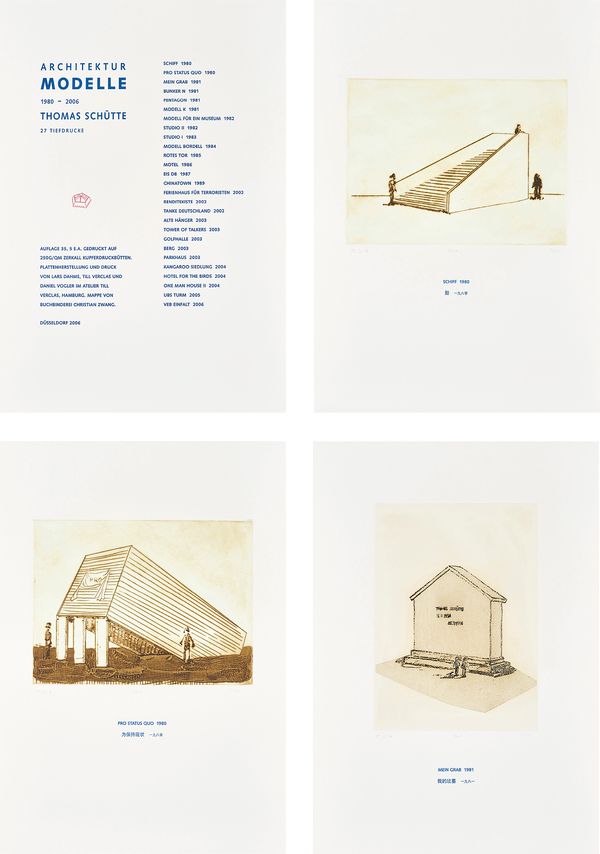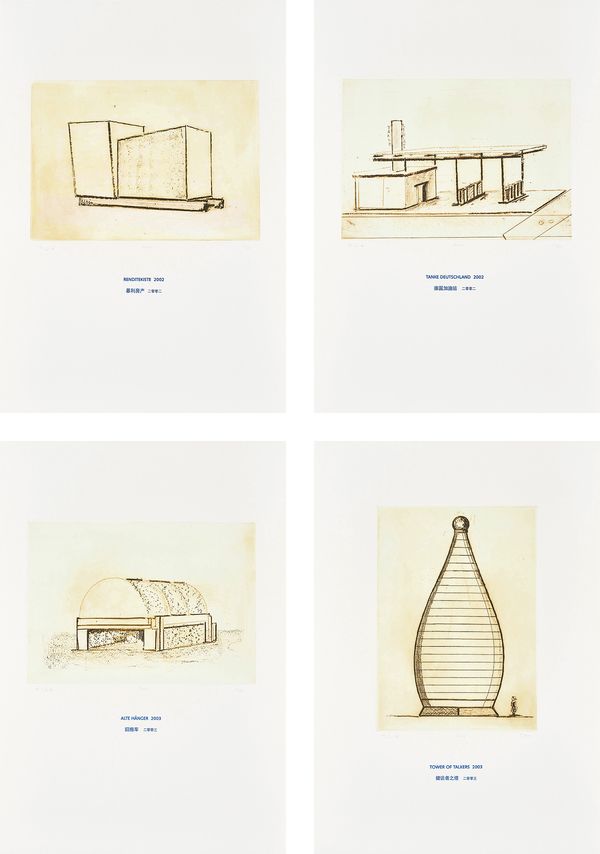Thomas Schütte Architektur Modelle 1980-2006 (Architecture Models 1980-2006), now on view at 30 Berkeley Square
Spanning over two decades of design from 1980-2006 and blurring the lines between sculpture and architecture, Thomas Schütte's models are as varied as they are imaginative. Weaving together his own compelling, fantastical visions with Brutalist aesthetics, the mostly fictive buildings are as much cultural commentary as they are creative design.
Schütte first began creating models in preparation for the seminal 1981 Westkunst exhibition, in expectation of providing the architectural infrastructure for the show held in Cologne's trade fair halls. Fortunately for the organizers (having spent the exhibition's funding more quickly than expected), Schütte made the pragmatic choice to exhibit just the models of the planned structures instead of realizing them in built form.
The result of this commission was Schütte's enduring focus on architectural models, creating a plethora of designs for houses, offices, studios, public squares, towers, gravesites and stage-like sets throughout his career. They can be understood as prototypes or basic forms, but only a few evolved into fully realized buildings. As the artist himself explained, "Not every model has to be built. There are thinking models, bricolage models, demonstration models and sculptural substitutes."
In 2006, Schütte decided to collate and immortalize some of the models created over the span of nearly thirty years. Providing something of a retrospective, Achitektur Modelle introduces a rich array of etched illustrations for 27 designs in which domestic, almost pedestrian images of houses, motels and petrol stations slowly melt into the surreal: caves, graves, staircases to nowhere and a helicoptering Pentagon.
Many of the etchings depict models that were dictated in form by the materials used to build them, such as the One Man Houses whose form is dependent on their main component of ready-made aluminum tubes intended for ventilation. More whimsically, the Golfhalle is just that, a sheltering roof made from the futuristic curve of a golf ball segment, whilst Eis D8 appears formed from an upturned cup.
Not every model has to be built. There are thinking models...demonstration models and sculptural substitutes. — Thomas Schütte
Others appear far less tied to recognizable materials and therefore far less concrete in our imaginations. It is hard to project, for example, how or from what the Tower of Talkers might be formed in reality. The majority of the architectural forms demonstrate a commitment to Modernist architecture: minimalist and with a design that is reduced to its function, recalling the new objectivity of a Mies van her Rohe. The Ferienhaus Für Terroristen for example (one of the few models that was actually built), could have been lifted directly from mid-century California, were it not for its purpose as a holiday home for terrorists. Of this design, Schütte speculated that if you were to give terrorists a nice house, they wouldn't bother terrorizing people anymore. Or maybe the fantasy collision of sleek Modernist architectural design, and people with a grudge against society, is an altogether darker, more combustible statement about the affluent West, and what people really want.
Schütte's etched models cannot be separated from these somewhat subversive undertones. "My works have the purpose of placing a crooked question mark in the world," says Schütte, and the questions he asks have an indirect, often politically motivated subtext.
Or maybe the fantasy collision of sleek Modernist architectural design, and people with a grudge against society, is an altogether darker, more combustible statement about the affluent West.
However, sometimes Schütte seems to turn that crooked question mark on himself as with Mein Graß , a proposal for his own gravestone, specifying the fictive date of his death in 1996. He had the idea out of the blue when walking through a graveyard and said, "I gave myself 15 years because I thought by then I will be dead anyway...when this date actually came it felt strange."
This melancholy humor, so characteristic in Schütte's work, is prevalent throughout the Achitektur Modelle. Always tipping the point of absurdity, his illustrations nonetheless seem grounded by the frequent inclusion of scale figures, keeping the focus on the human condition regardless of how fantastical the designs become.



